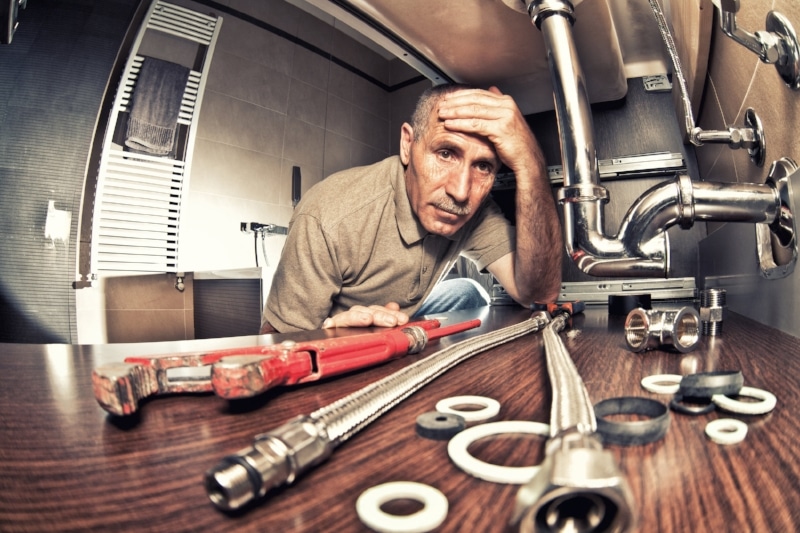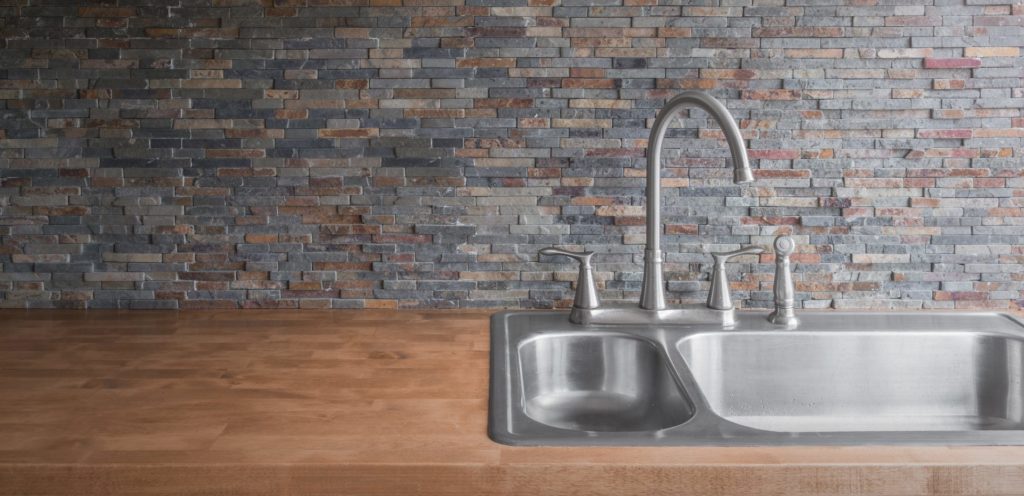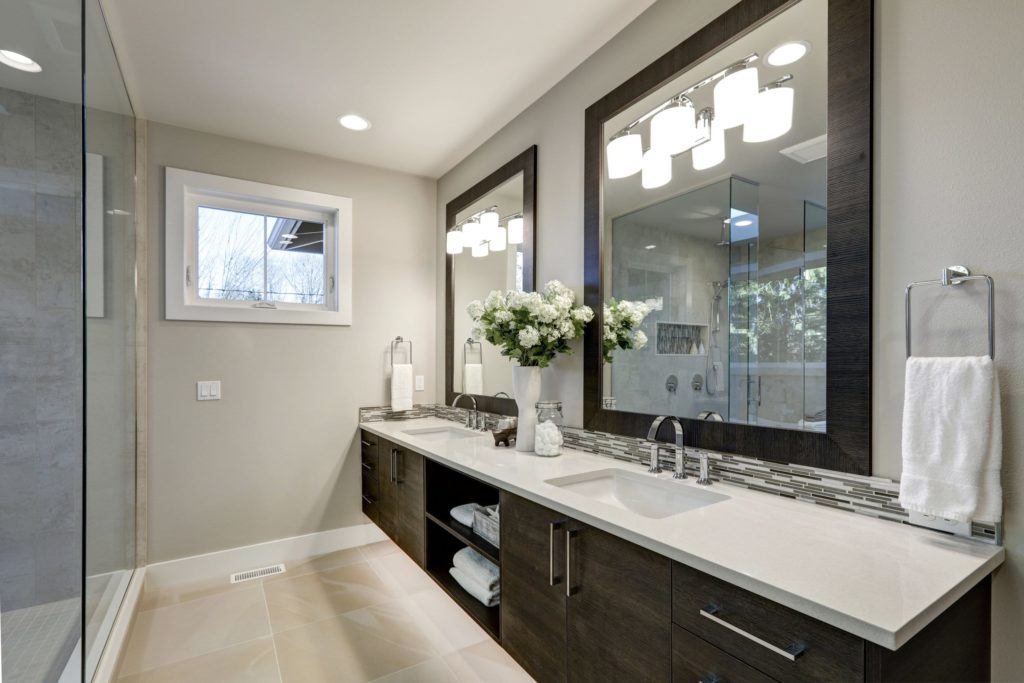
DIY jobs are becoming increasingly popular as people look for new ways to save money, upgrade their homes and do things for themselves. From leaky faucets to clogged toilets, you can do many plumbing jobs on your own. However, some do require a professional. Use this guide to determine what you can handle alone and when you should start searching the internet for “the best plumbers near me.”
Turning Off the Water Supply
Although not all plumbing projects require you to turn off the water supply before working, some will. Even if the project doesn’t require you to shut off the water, it may be a good idea to do it anyway. Your sinks will likely have an easy-access valve underneath them, and your toilet typically has one behind the base. Turn off all the valves to ensure you don’t have any watery accidents. If you can’t find the valves underneath the piece you’re working on, or if you need to work on your bathtub, you’ll need to shut the water main off.
Main valves are a bit trickier. While you might have one inside your house, you might find that your main valve is at the street. If looking in your home, focus on the ground level. This means a water main in the basement will likely have a shut-off valve at eye level or higher, but a water main on the ground floor means you need to look down.
The valve may also be outside your home near your water meter. If the valve is near the street, you will probably need to call your water company or a professional plumber for help. In many cases, Houston homes have the main shutoff valve coming up out of the ground and into the house located either on the side or front of the residence.
Choosing the Right Tools
Gathering the correct tools is an essential part of successfully completing a DIY plumbing job. The types of tools you need depend on the specific job, but it’s a good idea to gather each of these items so that you’ll always have what you need in the future.
If you don’t already own them, purchase a set of flathead and Phillips screwdrivers in various sizes. You’ll also need several types of wrenches for your plumbing repair kit:
- Pipe Wrench: A pipe wrench opens wider than a crescent wrench and provides a better grip while you work.
- Seat Wrench: If you ever need to work on a sink or bathtub faucet, you’ll need one of these.
- Basin Wrench: Bathroom faucets and some kitchen faucets typically have nuts in very tight places. A basin wrench’s design includes an adjustable-angle head that makes it easier to get to and remove the nuts.
You’ll need several other items in your kit, as well:
- A small drain snake to pull out clogs that aren’t too deep
- Teflon tape, for wrapping threads on pipe fittings
- Plumber’s putty. which is useful for sealing pipe joints or joints between basins and drains
- A water meter key, which helps you shut off the water main much faster

Working in the Kitchen
Leaky kitchen sinks are the most common plumbing problem, but they’re also one of the easiest to fix. Whether leaking from the handles or from the spout, the handle itself is your culprit. While instructions vary slightly depending on the type of faucet, the basic instructions for fixing one include removing the handle and the mechanism and replacing the seals surrounding the faucet. If you can’t discern which area is causing the leak, or if each seal is looking a little rough, you might consider replacing the entire faucet.
If you do want to replace the entire faucet, you’ll first need to determine which type to purchase. A sink with one hole requires a single faucet with no deck, and one with two holes typically requires one faucet and an accessory, such as a soap dispenser. Some sinks have three holes, and some have four. Since most kitchen sinks use single faucets, the extra holes are often for spraying mechanisms or other accessories. After determining which type of faucet to purchase, installing it is as simple as following the instructions included with your item.
Sometimes, a faucet works perfectly, but the sprayer accessory begins to malfunction. Replacing a sprayer is easy as long as you know which type you have. If the hose is detachable, it will be easier to replace. Simply purchase a new hose and nozzle.

Working in the Bathroom
If you want to start small on DIY plumbing, upgrading your shower head is the way to go. Installing a new shower head simply requires unscrewing the old one from the pipe, wrapping Teflon tape around the old threads and screwing on the new showerhead. Of course, it’s still important to read the instructions. While most will work with Teflon tape, some don’t require it. Pay attention to size, too, as some showerheads are too large for the pipe. If you fall in love with a showerhead and it doesn’t fit, you can also find extensions for the pipe to ensure everything fits well.
A toilet that never stops running is usually the next easiest fix in a bathroom. It typically occurs for one of three reasons: the flush valve doesn’t close completely, there’s too much water in the tank or the flush valve needs to be replaced. Replacement valves and handles are sold at any home improvement store, and they come with easy installation instructions. Most are standard and will fit any toilet, but you can take your toilet’s model number with you if you want to be sure. Look for it on the side or inside of the tank.
Do you have clogs in the shower drain, bathroom sink or toilet? Depending on how deep the problem runs, you may be able to take care of it yourself. A clogged toilet is easily fixed with a plunger. If the problem is in the tub, remove the drain plate to reveal the straight drain pipe that you can use a snake with.
If the problem is in the sink, grab a bowl, a bucket, an old toothbrush and some replacement washers. Be sure to turn off the water before crawling under the sink. Place a bowl under the trap to catch any leftover water and unscrew the sink trap. Remove any gunk and use a bucket of clean water to wash the trap with the toothbrush. Once it’s clean, you can screw it back onto the sink, using new washers to prevent further problems.
Working in Other Areas
There are a couple of other places in your home where plumbing knowledge comes in handy. Your water heater’s temperature and pressure valve, for example, may cause leakage. If you notice it leaking, check the water temperature before doing anything else. If it’s higher than 120 degrees Fahrenheit (medium), the valve is operating under too much pressure. If your water temperature is fine, you will likely need to replace the valve. When replacing, be sure to verify the length of the existing one to make sure you get a proper match.
When to Call a Professional Plumber
While fixing some plumbing problems yourself can save a lot of money, DIY plumbing can also cost you a lot of money if you don’t know what you’re doing. In these situations, it’s not only more cost-effective but safer to call a licensed professional. Some common plumbing problems you should call a plumber for include:
- Low water pressure
- Lack of hot water
- Pipe blockages, including punctured sewage lines
- A burst pipe
Other times you need a professional plumber include for any major installations and jobs that pose a safety hazard, such as working with electricity, gas or the major moving parts of a garbage disposal.
Mission Air Conditioning and Plumbing is a high-quality, professional company serving the Houston area. Contact us today for expert plumbing services at affordable prices.



